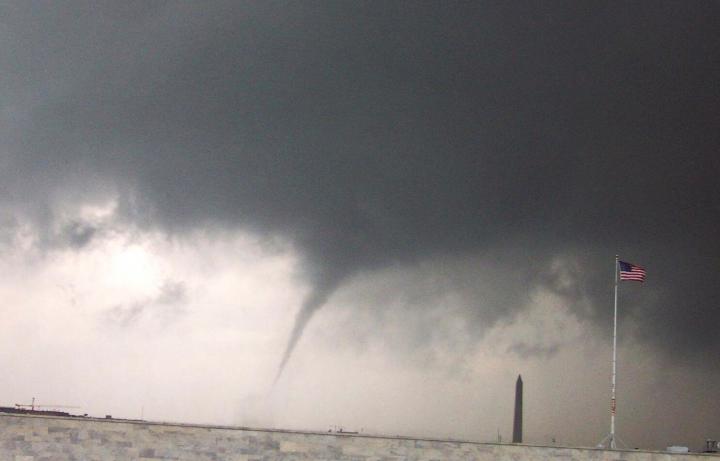This past hurricane season was a notable one, with some very strong and unusual storms in the Atlantic/Gulf, eastern/central Pacific, and western Pacific regional basins. Does this have any connection to a changing climate? Let’s have a look.
Hurricanes
In the Atlantic/Gulf of Mexico basin, Hurricane Michael strengthened rapidly just before it made landfall on October 9 on the Florida panhandle, with sustained winds of 155 miles per hour and a central pressure of 27.1 inches, thereby becoming the third strongest landfalling hurricane in the United States on record. Michael then tracked northeastward to the opening of the Chesapeake Bay, and its remnants survived all the way across the Atlantic, combining with the remnants of Hurricane Leslie to bring heavy rain to Spain and Portugal.
Meanwhile, the eastern/central Pacific basin set a new record for its most severe overall hurricane season, beating 1992 for the highest Accumulated Cyclone Energy index (ACE) on record there. ACE determines the contribution of each storm by multiplying its strength by its duration and then adding the contribution of each storm together to provide a measure of the total seasonal storm power.
June was an extraordinarily active month throughout the eastern/central Pacific basin, breaking the record for number of tropical cyclones (six), as well as tying the records for the number of named storms (five) and major hurricanes (two). Overall, this season’s storms tied the record for most Category 5 storms (three), set a new record for the most storms of at least Category 4 (10, shattering the old record of 7), and tied the record for most landfalling storms, with six.
The most notable eastern/central Pacific storms included:
- Hurricane Lane, which formed in mid-August and became the first Category 5 storm of the season, and the wettest tropical cyclone on record in Hawaii.
- Hurricane Walaka, which became the second strongest tropical cyclone ever observed in the central Pacific and completely destroyed East Island, which was an 11-acre northwestern Hawaiian island approximately 550 miles northwest of Honolulu.
- Hurricane Willa, which reached Category 5 status but weakened to Category 3 before making landfall in southwestern Mexico. The remnants of Willa brought heavy rain to Texas and the southeastern states and then moved off the Atlantic coast in late October, where it became a powerful nor’easter that brought heavy rain and even some early-season snow.
In the western Pacific basin, there were 40 tropical systems reported, with at least 20 causing deaths and six Category 5 “super typhoons.” Most notable was Typhoon Mangkhut, which killed at least 134 people and caused nearly $3 billion is damage.
While there are many factors that play a role in the formation, intensification, movement, and effects of hurricanes, models suggest that these storms will have a tendency to be stronger and slower-moving on a warmer Earth. Although it is difficult to attribute any particular storm to a warmer Earth, this year’s hurricane season was certainly consistent with that overall premise.

One of several tornadoes that struck Washington, D.C., in September 2001.
Tornadoes
Some have wondered whether a warmer Earth would also bring more tornadoes. Back in September 2001, a major tornado outbreak brought several tornadoes to Washington, D.C., including a violent F4 tornado, the strongest on record in that area. The U.S. Congress, concerned that if Earth continued to warm, there would be more and stronger tornadoes, appointed a committee to review the record and issue an expert opinion about the historical trend and what it might mean for the future. As one of that committee’s members, I participated in the research and helped to draft its conclusions:
- There was a definite trend of increase in the total number of reported tornadoes in the United States.
- Not only was there no increase, but also there was a slight decrease in the number of strong to violent tornadoes (F3 to F5) reported.
- The increase in total tornadoes was not real but was rather an artifact due to better reporting of tornadoes as a result of higher population density, increased media coverage, and the deployment of a national Doppler radar network.
- There did not seem to be any overall trend in either overall tornado activity or strong tornado activity, and there seemed to be no correlation with any increase in temperatures.
Nearly 20 years later, these conclusions still seem correct. Earth has warmed significantly since then, but the number of tornadoes—and especially of stronger tornadoes—has not increased. In recent years, 2017 had the least reported activity of strong to violent tornadoes in half a century, and 2018 is on track for an even lower total.











